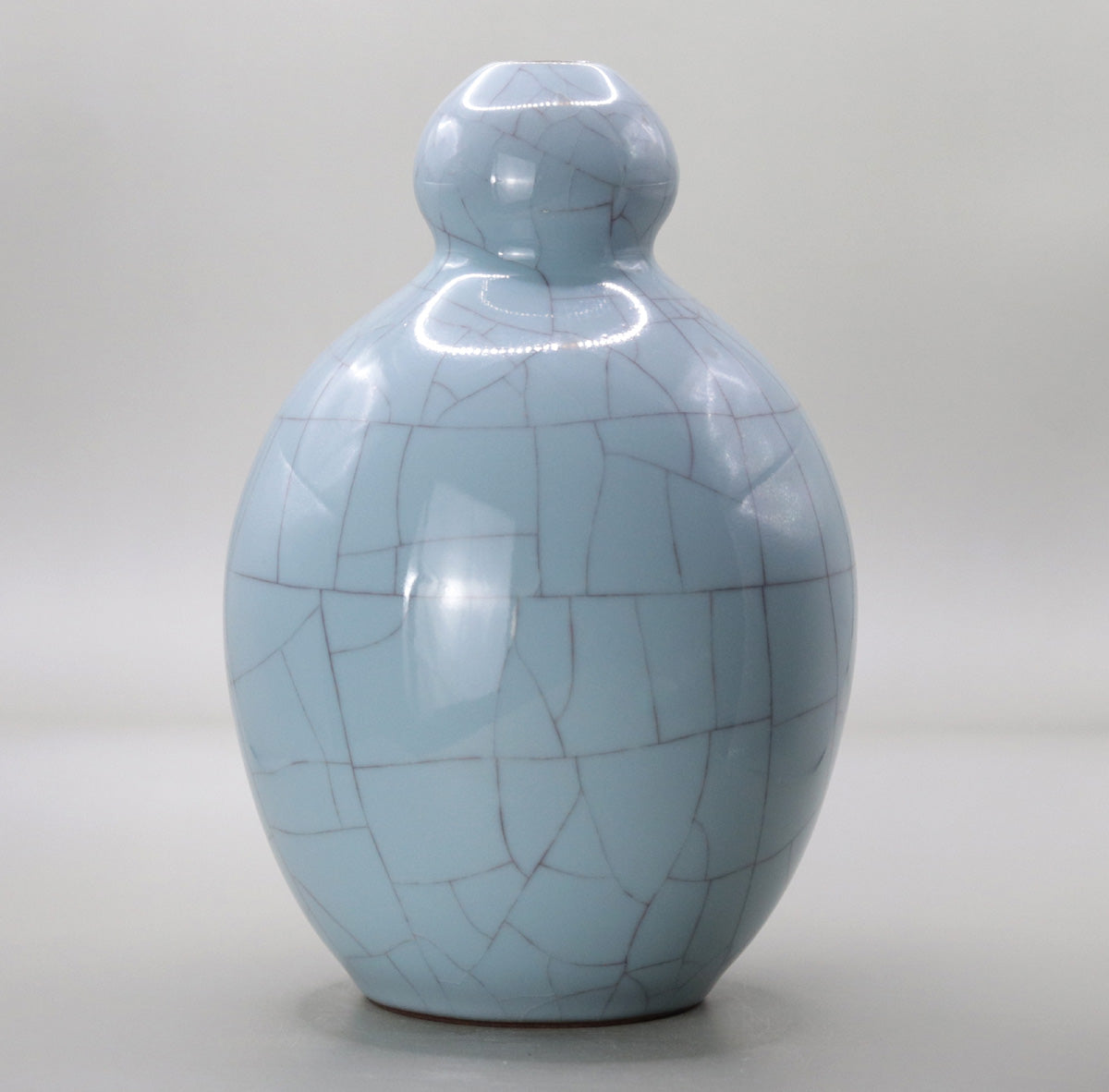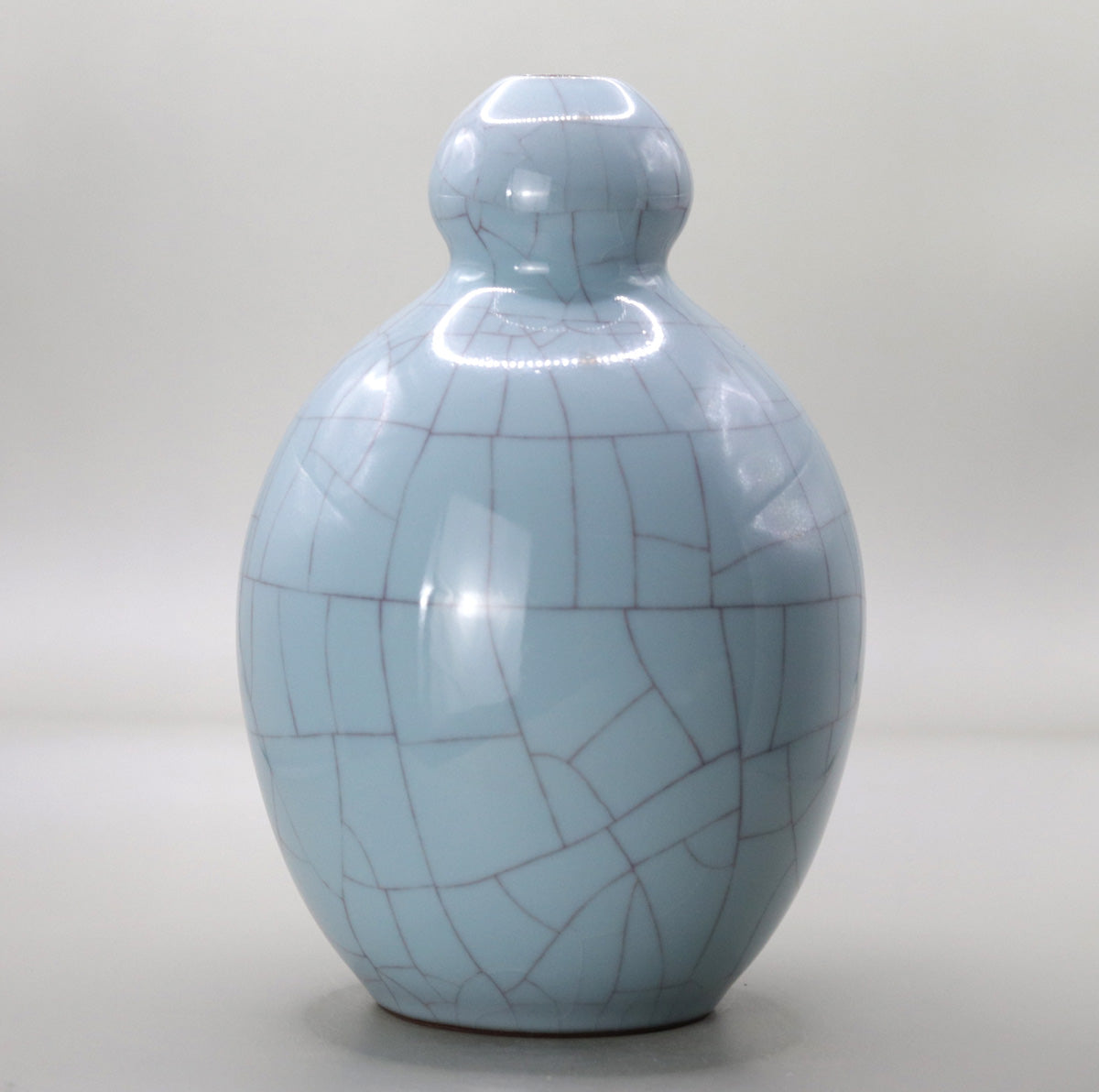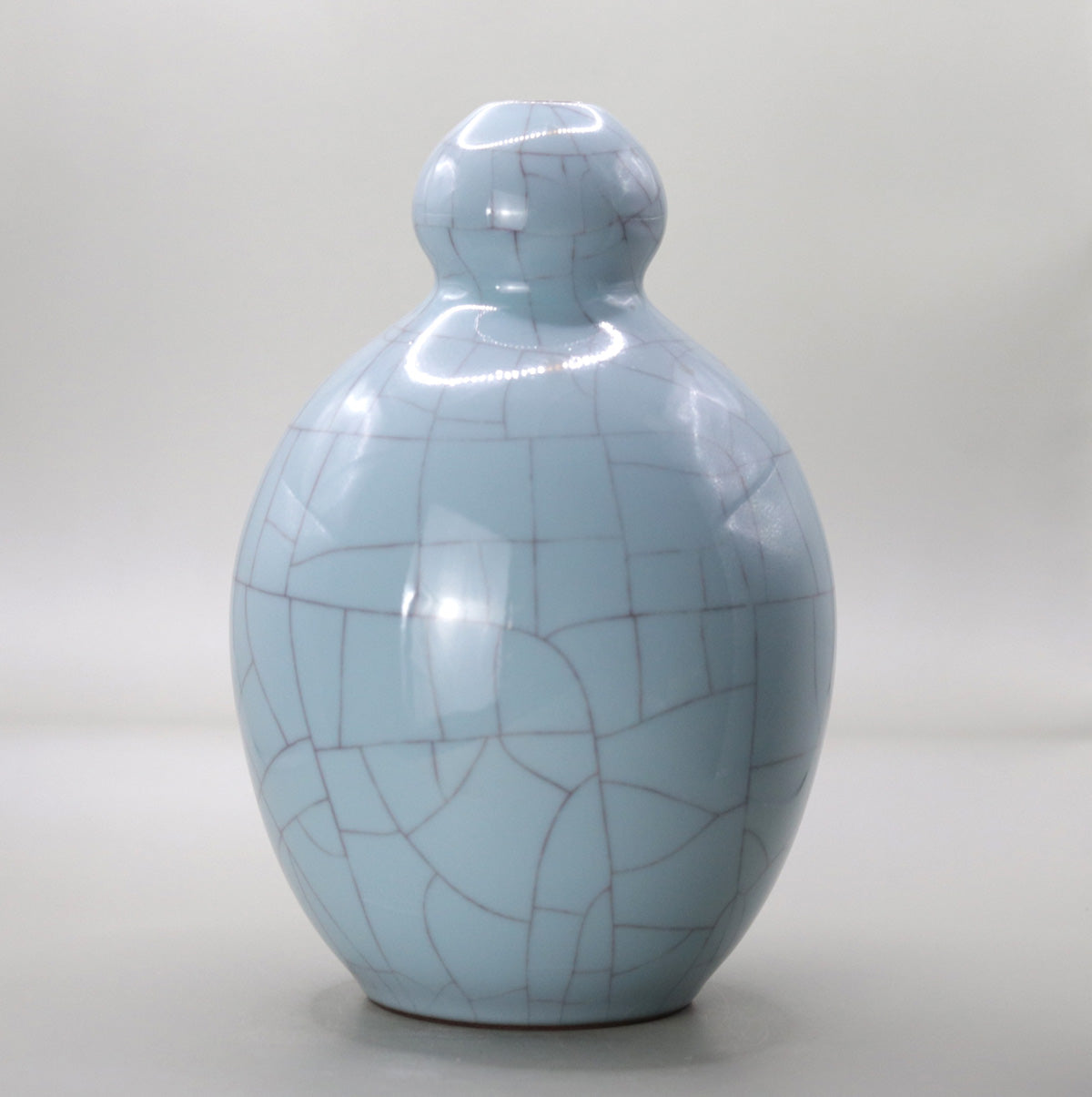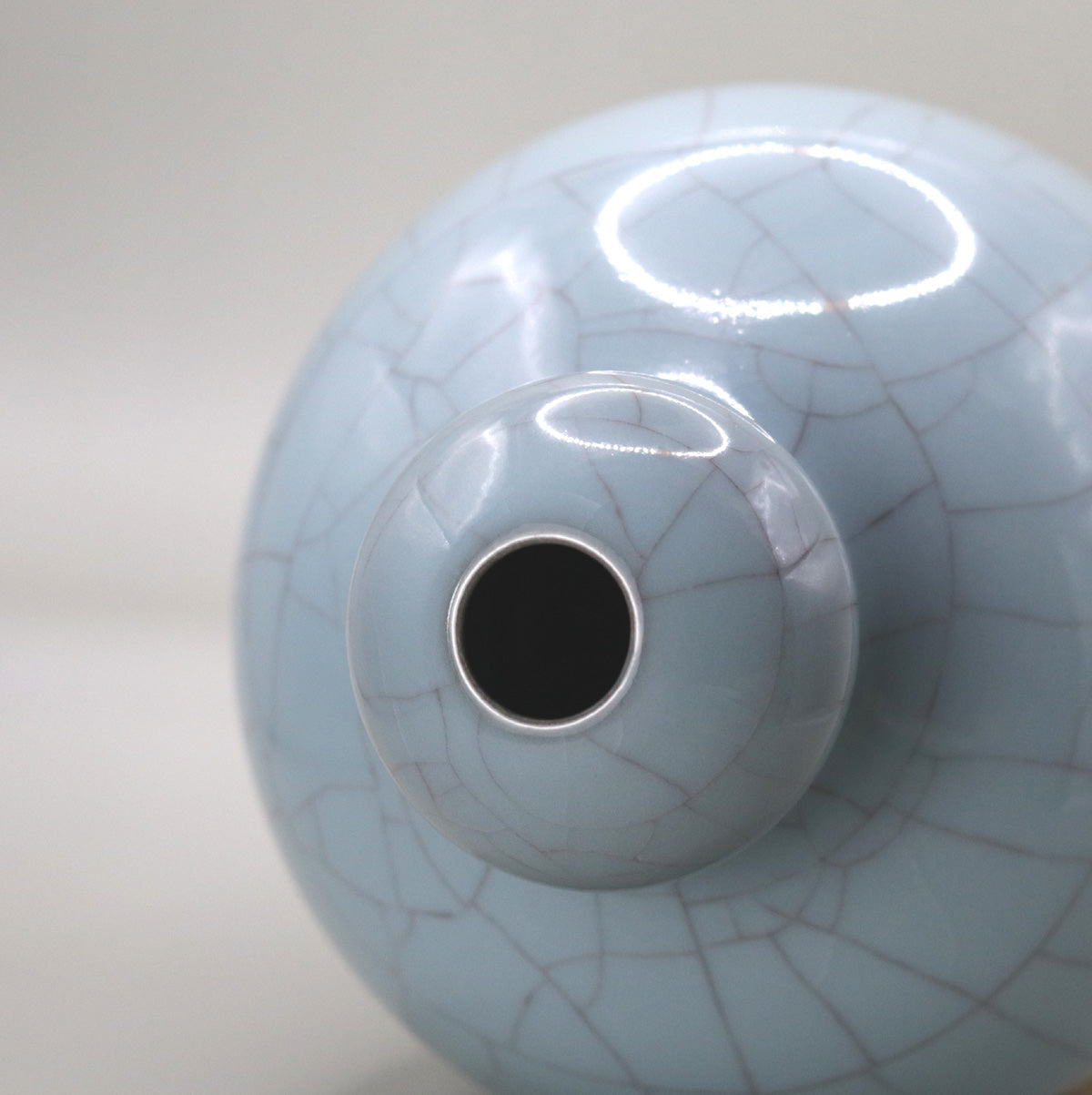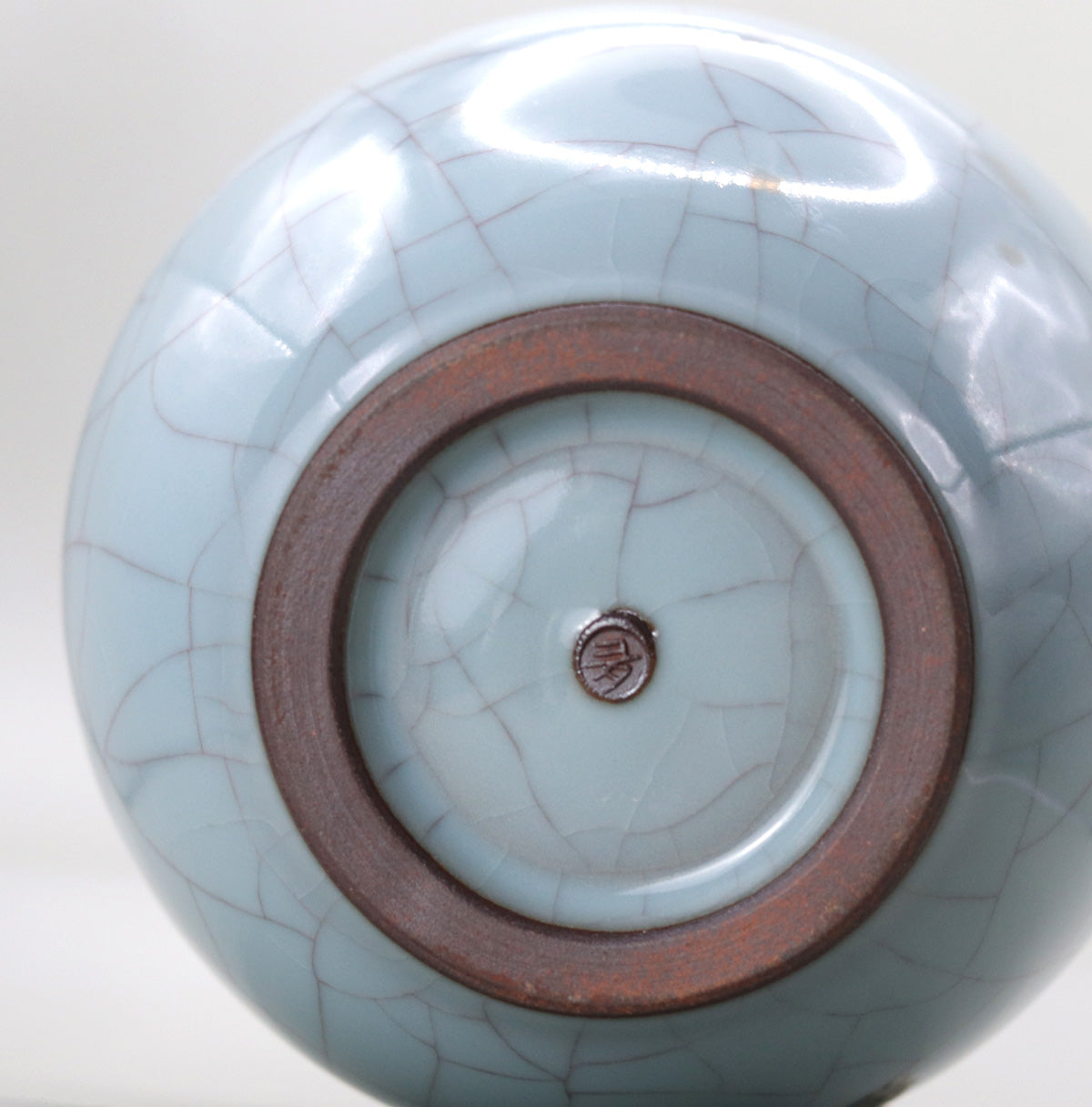Blue gourd vase Masao Tagai
Blue gourd vase Masao Tagai
Couldn't load pickup availability
Width: 17cm x 17cm Height: 23.3cm
Celadon flower vase by Masao Tagai
1. Overview of the work
This celadon vase features a striking "square crackle" pattern of vertical and horizontal lines running like a checkerboard beneath a thick glaze that celebrates the clear blue of the sky. The unique silhouette, with a rounded body and a bulge from the neck to the rim, combines the charm of a gourd shape with the refinement of a plum vase, demonstrating a beauty of form that stands out not only in tea ceremonies but also in modern spaces.
2. Shape and form
| part | Shape characteristics | Aesthetic and practical effects |
|---|---|---|
| Mouth rim | Small and slightly curved, with iron giving it a silver-gray color. | The flower fastener effectively tightens up the pale blue world. |
| neck | It rises smoothly from the torso and bulges along the way. | It raises the centre of gravity supporting the flowers, creating a light movement. |
| Body | A firm volume that is close to an egg shape | It softly reflects the surrounding light and blends in with the space. |
| Heights | Low go bowl bottom | It ensures stability while giving a lighter look. |
3. Characteristics of glaze and crazing
The iron powder is adjusted and the blue is brought out through high-temperature reduction, and then the final stage is reduced to a more oxidized state, resulting in a pure blue color with no reddish tinge.
Square crackle : By making the difference in the coefficient of expansion between the clay and the glaze large, the glaze layer breaks into a planar shape when cooled, forming a unique pattern of linked squares and polygons. Mr. Tagai is conscious of the "coexistence of stillness and movement," and creates movement by not making the line widths too uniform and deliberately adding rhythm.
Ink dyeing process : After firing, brown colored water is permeated and the dye spreads to the cracked lines, creating shadows like ink paintings. With years of use, the lines become deeper as the piece is exposed to water and humidity.
4. Technical background
Masao Tagai, a full member of the Japan Crafts Association, has conducted extensive research into thick celadon glazes, and is an outstanding master of controlling the clear blue and crazing scenery of "Rainy Blue." In this work, feldspar and a small amount of Segel corn are mixed into the clay, giving it a higher expansion rate than the glaze. This allows for a thick glaze that does not peel off, and a formula that intentionally creates square cracks is perfected. In addition, a mirror finish is achieved by reheating the glaze at a low temperature and remelting the surface of the glaze, resulting in a high gloss and reflection.
5. Historical and cultural context
The aesthetic sense of admiring the crazing of celadon originated in the official kilns of the Song Dynasty in China, and in Japan it developed uniquely as a wabi decoration from the Momoyama to early Edo periods. In particular, the regular square crazing is known as a scene connected to the "Gyozamon" and "Houshoumon" patterns of the Song Dynasty official kilns, and is considered a symbol of the intermingling of man-made and natural elements in the tranquil blue. Based on this classic design, Tagai reconstructed it using modern material science and firing control, elevating it to a modern form.
6. Combination with floral materials
| season | Recommended flower materials | Points to consider |
|---|---|---|
| spring | Yamabuki, Snow Willow | The crazes running vertically and horizontally echo the branch lines, creating the feeling of a fresh spring breeze. |
| summer | Fujibakama, Hangesho | The cool blue brings out the white flowers and pale purple, creating a cool feeling in the tokonoma alcove. |
| autumn | Wild blue chrysanthemum, Goei red | The square lines and the straight lines of the flower stems resonate with each other, creating a flickering autumn scene. |
| winter | Pale red camellia, Nanten | The reflection of the trunk reflects the red berries and petals like a mirror, creating a combination of stillness and elegance. |
7. Points to note when viewing and using
Reflected scenery <br data-end="1593" data-start="1590">The curved surfaces softly reflect the light of the surrounding hanging scrolls and lanterns, making the vessel itself a "mirror containing the scenery."
Square interpenetrating shadows <br data-end="1658" data-start="1655">Strong oblique light highlights the contrast between the lines and surfaces, allowing you to enjoy the depth of an abstract painting.
The aged beauty of the iron rim <br data-end="1721" data-start="1718">The silver-gray rim takes on a black luster with the touch and the floral design, further enhancing the blue and ink lines.
8. Conclusion
This "Celadon Vase" is a masterpiece that perfectly harmonizes the clear blue of the sky, the tension of the square crackles, and the volume of the soft gourd shape. Just by putting a single seasonal flower in it, a contrast between stillness and movement, wabi-sabi and floral, appears in the space, gently stirring the hearts of those who see it. Over the years, the crackles deepen and the blue becomes slightly more subdued, creating a story that grows with the vessel. We hope you will spend many years having conversations with the flowers and carving your own unique scenery into this celadon.
Share

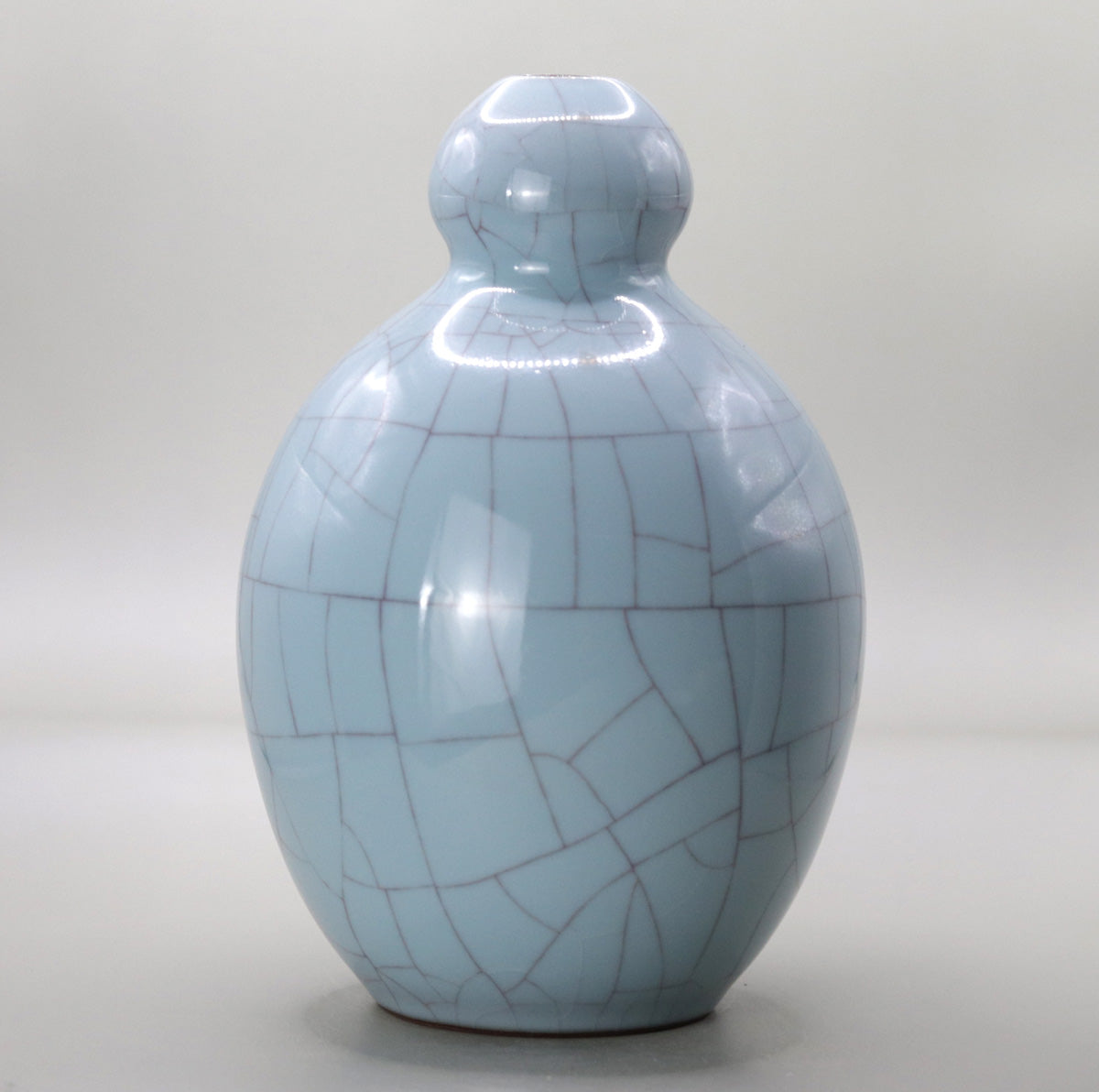
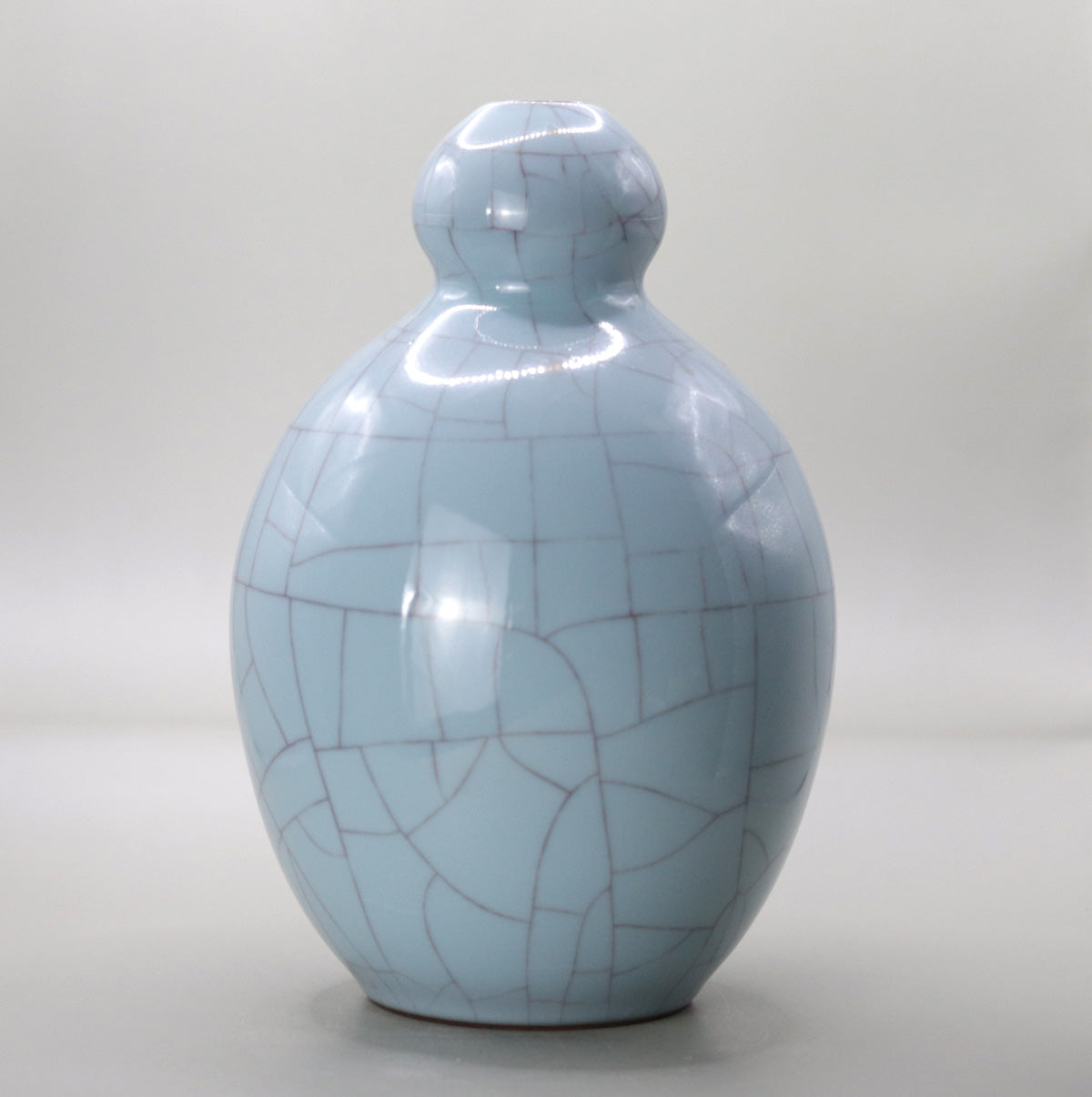
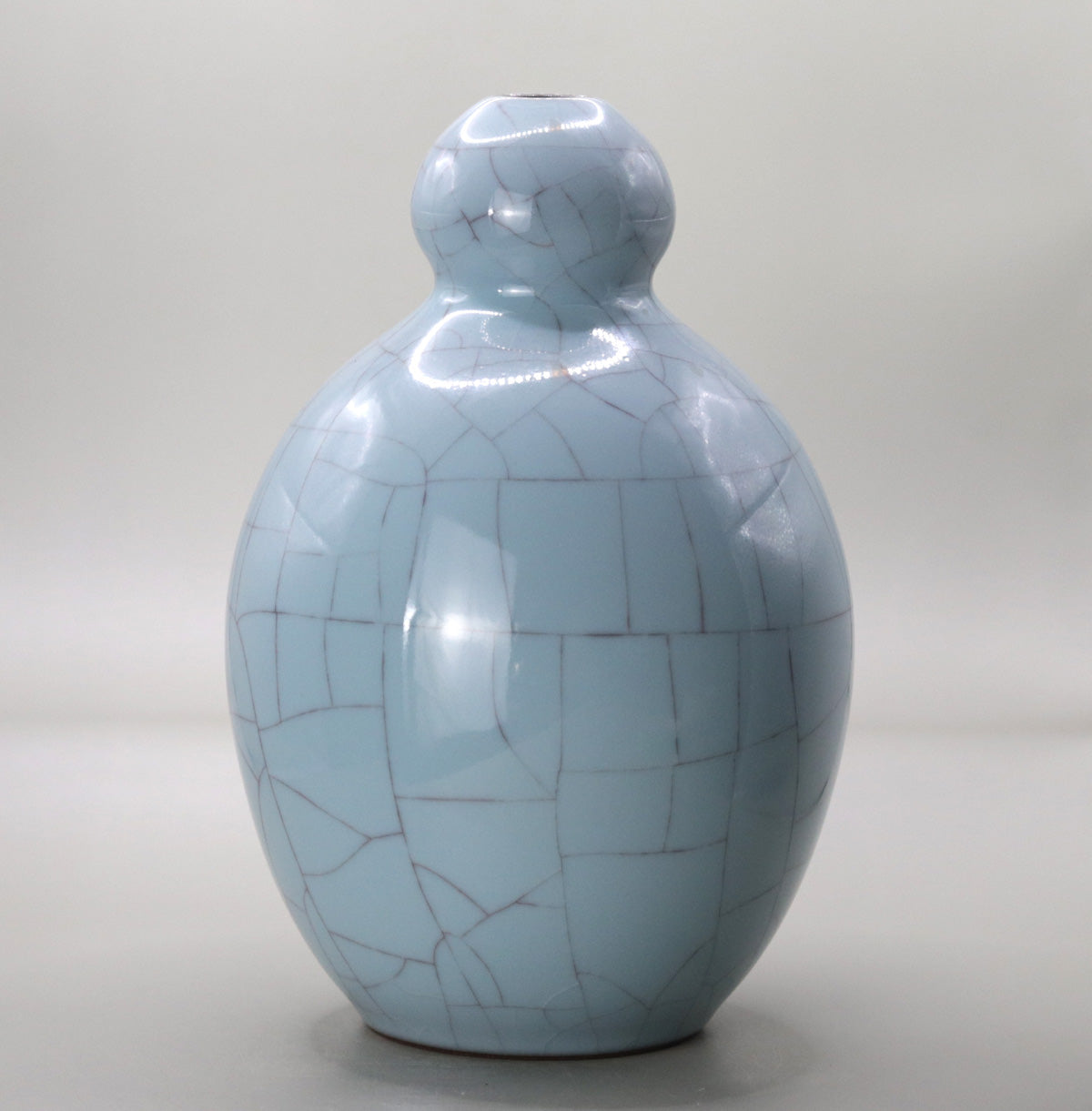
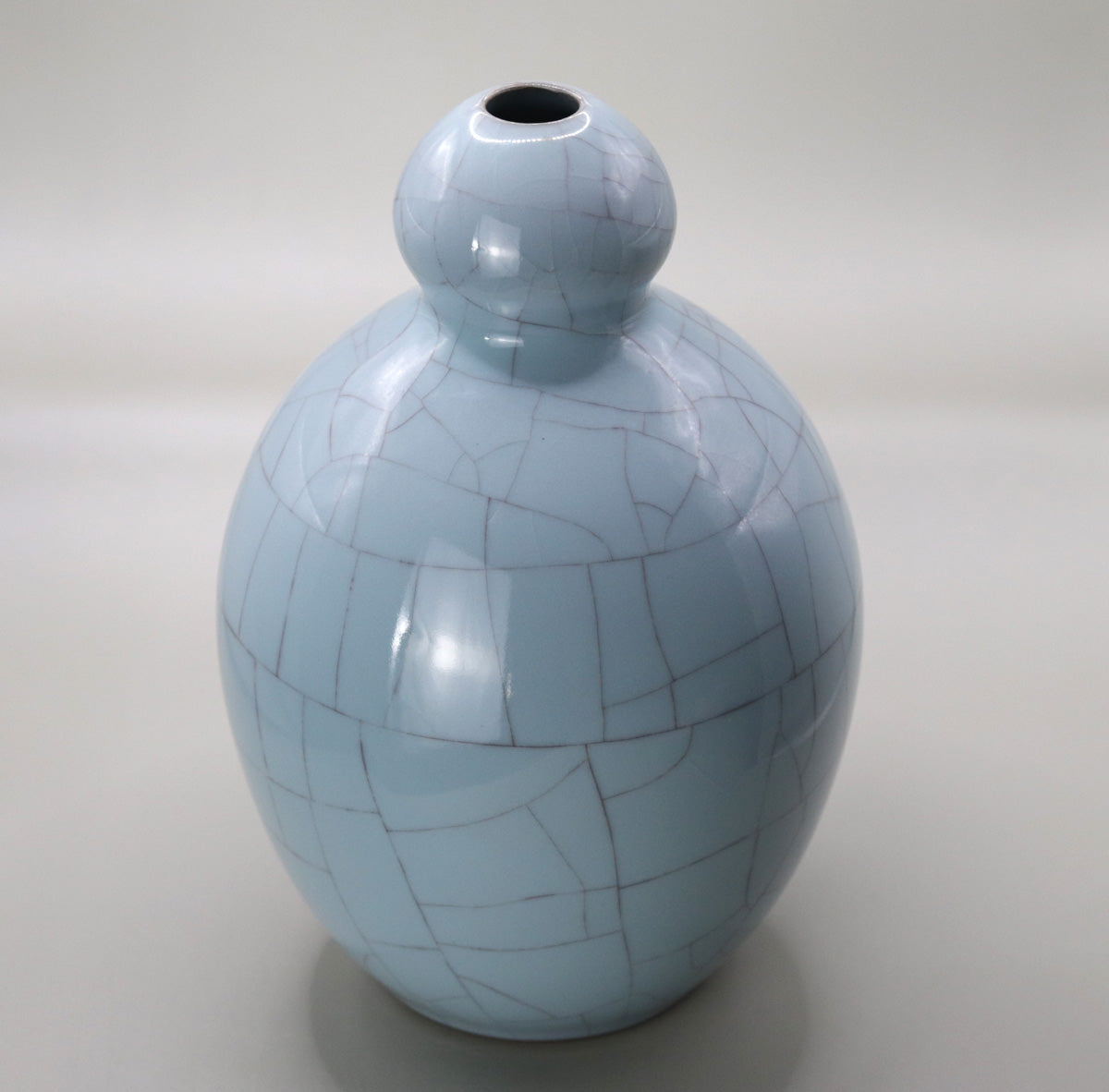
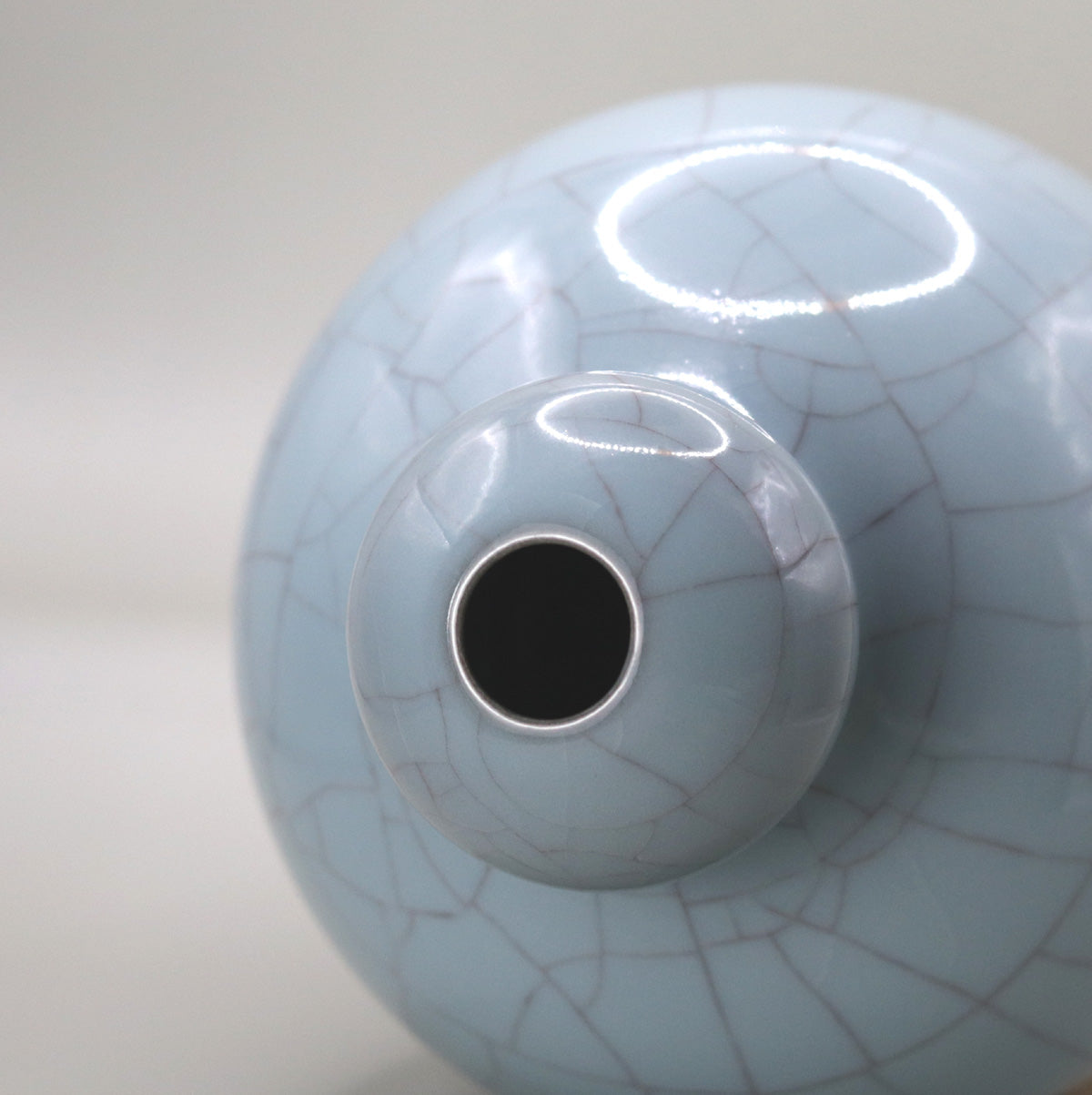
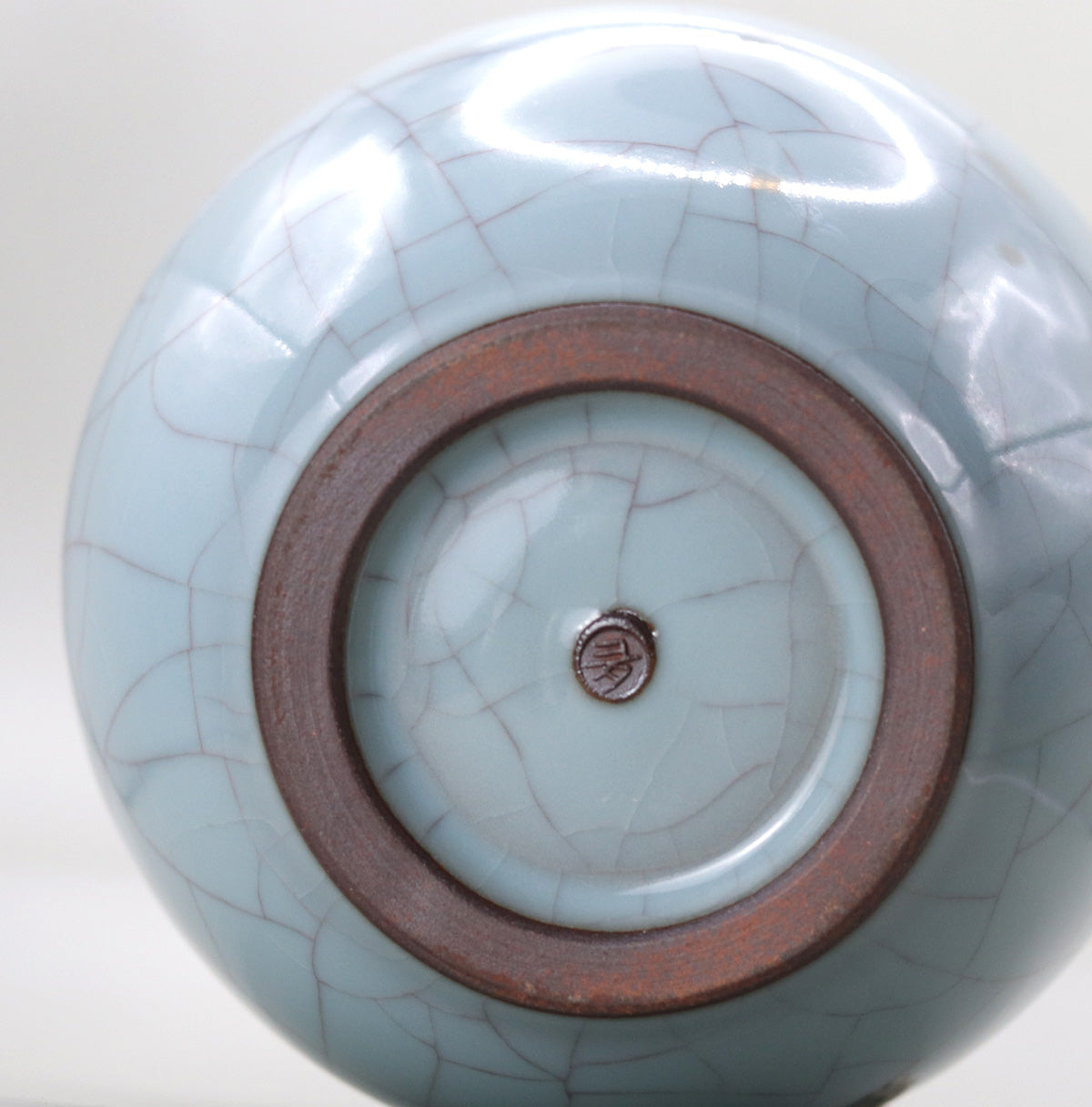
Multi-Column
-
[I will send it to you quickly and carefully]
We carefully package each product in a way that suits it best.
Also, delivery times vary depending on the piece (vessel, etc.).
Items that already come with a box will be shipped within 1-3 days of the order date.
For items that require a box to be made after your order, it will take approximately 30 days for production to be completed and then shipped.
In either case, once we have confirmed your order, we will contact you by email to inform you of the delivery date.
-
[Requests when purchasing pottery]
Even products that look the same may differ slightly in color, shape, size, etc.
The way the glaze is used, the power of the kiln, the firing method, the season, and the humidity also affect the appearance of the pottery.
Please understand the individuality of each piece of pottery and enjoy the unique warmth of handmade.

